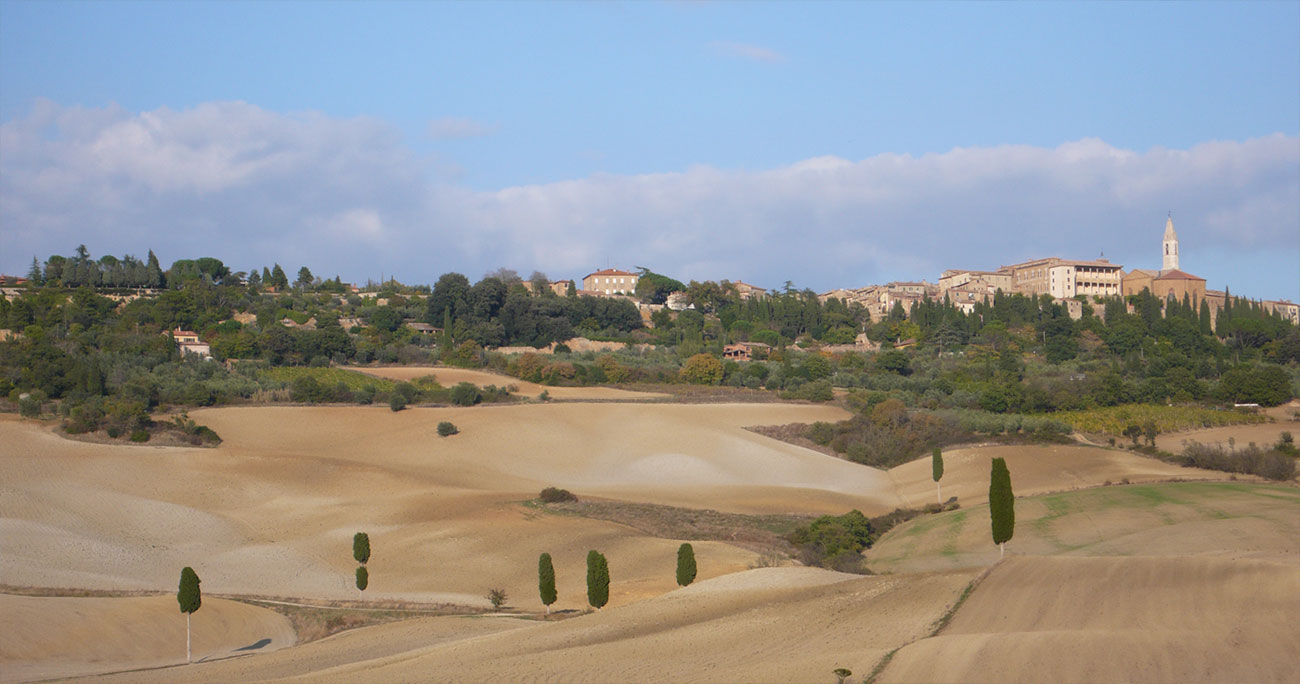
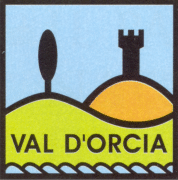 Val d'Orcia is a wide valley located in the province of Siena, in Tuscany, to the north-east of Mount Amiata and near the border on Umbria. Crossed by river Orcia in the middle, after which it is named, is characterised by pleasant landscape views and by various centres of medieval origin, two of which are very well known, such as Pienza and Montalcino.
Val d'Orcia is a wide valley located in the province of Siena, in Tuscany, to the north-east of Mount Amiata and near the border on Umbria. Crossed by river Orcia in the middle, after which it is named, is characterised by pleasant landscape views and by various centres of medieval origin, two of which are very well known, such as Pienza and Montalcino.
The valley is also an important natural, artistic and cultural park that was recognised Mankind’s World Wealth by UNESCO for the excellent state of preservation of the panorama on 2nd July 2004.
The Committee justified the insertion in the list this way:
Val d'Orcia is an exceptional example of how the natural landscape has been re-outlined in the Renaissance period to reflect the ideals of good government and to create an aesthetically pleasant image;
the Val d'Orcia landscape was celebrated by the painters of the Senese School, flourishing during the Renaissance. The images of Val d’Orcia and, in particular, the reproductions of its landscapes portraying people in harmony with nature, have become the icons of Renaissance and they have deeply influenced the way of thinking over the landscape in the future years.
The municipalities that are part of Val d'Orcia are Castiglione d'Orcia, Montalcino, Pienza, Radicofani and San Quirico d'Orcia. Other important centres are Monticchiello, Bagno Vignoni, Rocca d'Orcia, Campiglia d'Orcia and Bagni San Filippo. Very many rural tourist facilities, rural houses and fortresses with inaccessible towers are scattered in the quiet and isolated landscape.
A typical tree is cypress, typical food and drinks are Pici, Pecorino di Pienza, Brunello di Montalcino, Nobile di Montepulciano and the new designation of the Orcia DOC wine.
The Val d'Orcia Park, including the five municipalities (Montalcino, Pienza, S. Quirico, Castiglione d'Orcia, Radicofani), has been set up mainly to provide for the preservation of the natural and artistic possessions of the valley while trying – at the same time – to assure the man, who – thanks to his/her works - has contributed to the genesis of an extraordinary wealth, an actual economic improvement. The Val d'Orcia landscape is the expression of an enchanting nature, but it is also the result and evidence of the activity of the people living there and mostly bound by traditions and the peasant culture.
 Montalcino is famous for its red wines starting from the 15th century. Brunello’s inventor is Ferruccio Biondi Santi, who first decided to leave Canaiolo, Ciliegiolo and Colorino to focus on Sangiovese.
Montalcino is famous for its red wines starting from the 15th century. Brunello’s inventor is Ferruccio Biondi Santi, who first decided to leave Canaiolo, Ciliegiolo and Colorino to focus on Sangiovese.
Its bottle dated 1888 is probably the first one in the history. Respectively in 1966 and 1980, Brunello was one of the first Italian wines conferring the DOC (Designation of Controlled Origin) and DOCG (Designation of Controlled and Guaranteed Origin) titles upon itself.
Brunello may be marketed after a five-year ageing (six for the vintage type), at least two of which in oak barrels. Rosso di Montalcino can be sold after one year.
Vino Nobile di Montepulciano is a DOCG red wine produced on the territory of the municipality of Montepulciano. It can be only obtained from the grapes grown in the production area provided by the regulation, by using Sangiovese and Canaiolo black grapes. Wine must mature for at least two years.
In the ‘90ies, Orcia DOC, which is produced on the territories of Abbadia San Salvatore, Buonconvento Castiglione d'Orcia, Chianciano Terme, Montalcino, Pienza, Radicofani, San Casciano dei Bagni, San Giovanni d’Asso, San Quirico d'Orcia, Sarteano, Torrita di Siena and Trequanda, was added to the list of the DOC wines of Tuscany. The Orcia white wine is produced with Trebbiano Toscano for at least 50% and by authorised non-aromatic white-berry vines for the other half.
Orcia Rosso is composed by Sangiovese for at least 60% and by other authorised non-aromatic grapes for 40%, max. 10% of which are white.
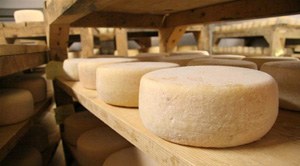 It acquired the current name Pecorino di Pienza just a short time ago, in the past known as Pecorino delle Crete Senesi.
It acquired the current name Pecorino di Pienza just a short time ago, in the past known as Pecorino delle Crete Senesi.
Vegetable rennet is of special importance in its production, conveying a sweet and bitter taste at the same time. Pecorino di Pienza shall mature in a span of time between thirty days and four months.
This type of «cacio» seems to go back to the Neolithic time and evidence is given by the milk-process containers found in a Prehistoric village in the proximity of Pienza. In the ‘60ies, many estates were abandoned and dozens of Sardinian shepherds arrived with their own flocks, which has brought about a partial product change.
Now, to make it unmistakable, just as many centuries ago, is the presence of a unique and fragrant mix of herbs, including savoury, thymus serpyllum, elicrisus and absinthe.
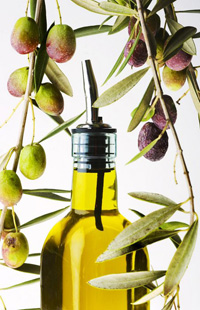 The DOP extra-virgin oil produced in Val d'Orcia is obtained from moraiolo, frantoio and leccino olives. It has got a fruit-like odour as well as a bitter and slightly spicy taste. Wonderful olive groves characterise the landscape of the five municipalities of the valley.
The DOP extra-virgin oil produced in Val d'Orcia is obtained from moraiolo, frantoio and leccino olives. It has got a fruit-like odour as well as a bitter and slightly spicy taste. Wonderful olive groves characterise the landscape of the five municipalities of the valley.
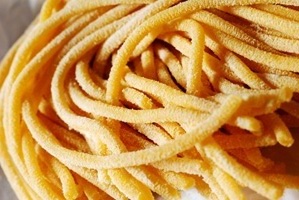 Pici are the ancestors of spaghetti. They are hand-made and stretched until they are three metres long. There is nothing poorer than this kind of paste in the culinary art. As a matter of fact, it is traditionally made of water, flour and salt only. Eggs are rarely tolerated and just to give a note of colour.
Pici are the ancestors of spaghetti. They are hand-made and stretched until they are three metres long. There is nothing poorer than this kind of paste in the culinary art. As a matter of fact, it is traditionally made of water, flour and salt only. Eggs are rarely tolerated and just to give a note of colour.
This paste has been the food of the poorest people for very many generations who were satisfied with flavouring it with just a little oil and minced onion.
According to tradition, it is flavoured «all'aglione» or «alle briciole», i.e. with the two most popular sauces. The «all'aglione» sauce is prepared in a pan by crushing large garlic cloves in some extra-virgin oil.
The sauce with crumbs is one of the humblest and simplest flavouring. It is based on crumbs from some slices of bread, much better if it is stale and slightly toasted.